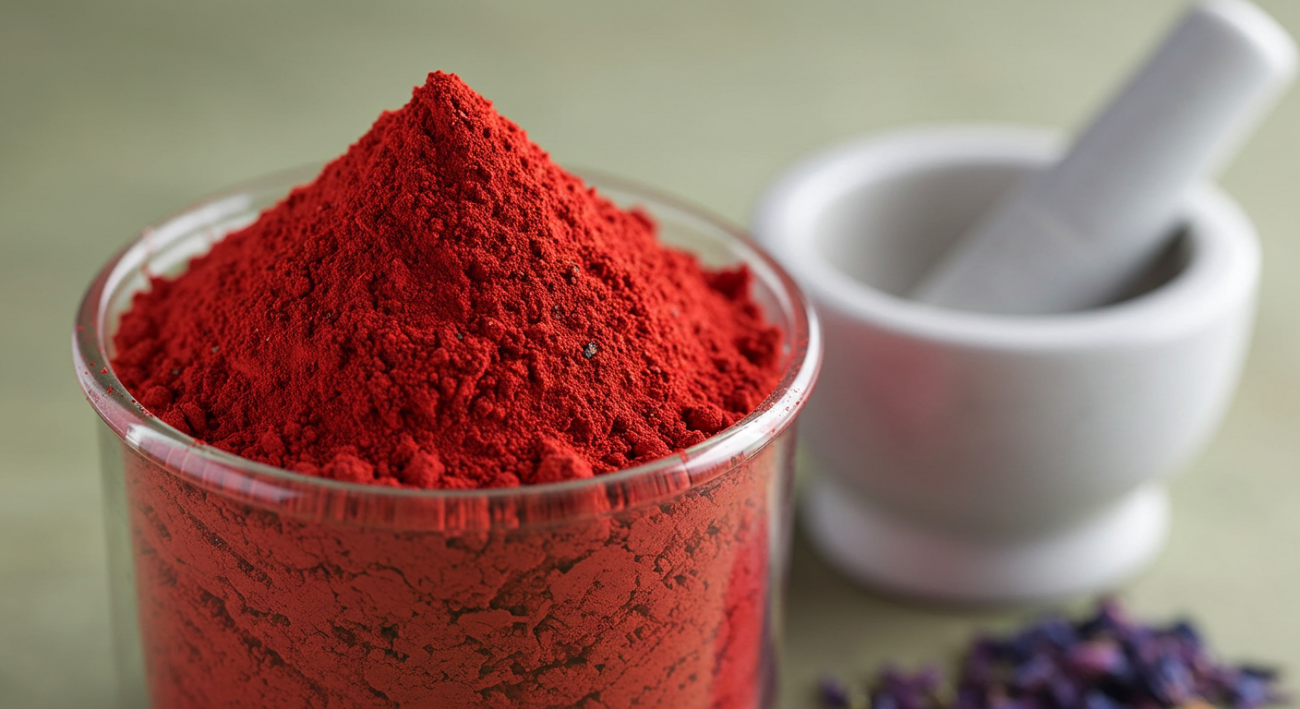Plant-Derived Colorant: Sustainable Pigment Solution of Nature
Plant-based colorants are becoming a potent substitute for synthetic dyes in a world that is moving towards the concept of sustainability and clean-label products. They are botanical pigments extracted as a byproduct of fruits, vegetables, flowers, roots, and other natural resources and are transforming industries such as food, cosmetics, textiles, and pharmaceuticals. The article discusses their advantages, usage, accolades, and how companies should use these natural pigments to remain competitive in the global market.
What is a Plant-Based Colorant?
Plant-derived colorant is an extract of a plant’s color. Botanical pigments are made of renewable sources, unlike synthetic colorants that depend on chemicals and compounds made of petroleum. Anthocyanins of berries, carotenoids of carrots, betalains of beetroot, and chlorophyll of spinach are examples. Their colors are appreciated, and their bioactive compounds, which frequently introduce antioxidant, anti-inflammatory, and health-promoting activities, are appreciated as well.
Technical Data: Characteristics of Colorants of Plant Origin
Plant-based colorants are biotic compounds that are extracted from natural botanical raw materials, including roots, leaves, fruits, and flowers. A combination of their chemical properties, stability, and functionality is what defines them as the best replacements to synthetic dyes in food, cosmetics, nutraceuticals, and pharmaceuticals.
Chemical Composition:
Examples of such pigments are anthocyanins, carotenoids, chlorophylls, betalains, and flavonoids. Each of the compounds produces a unique color range that goes between dark reds and purples to light yellow and greens.
Stability:
Stability is a factor of pH, light, and temperature. As a case, anthocyanins are red in acidic solution but change color to blue in high PH. High extraction and encapsulation techniques make them light and thermostable.
Solubility:
Numerous plant pigments are very water-soluble and can be used in a beverage or aqueous formulation. Fat-based variants also have oil-dispersible variants.
Bioactivity:
Besides the coloring effect, the pigments of plants have anti-oxidant, anti-inflammatory, and antimicrobial effects. These bioactive characteristics add value to their health-oriented formulations.
Compliance:
Plant pigments of high purity comply with the requirements of all global regulations (FDA, EFSA, and ISO certifications), ensuring safety, consistency, and traceability.
In general, plant-based colorants can merge both color and functionality, as well as aesthetic and natural values, which correspond to the clean-label and sustainable products.

Why Colorants Derived From Plants are Popular?
- Health Awareness- Consumers are given preference to non-toxic, non-GMO, and clean-label products.
- Sustainability – Plant-based colorants lead to a decrease in reliance on synthetic chemicals.
- Regulatory Support – FDA, EFSA, and others promote the use of natural pigment in food and cosmetics.
- Brand Value – When companies utilize products with environmentally friendly ingredients, they earn a reputation of trustworthiness among consumers.
- Functional Benefits – There are pigments (such as anthocyanins) that not only give them color but also nutritional benefits.
Plant-Derived Sources of Colorants
Plant pigments are produced by extracting a very diverse array of botanical sources. Others that are the most popular include:
- Carotenoids- Carrots, tomatoes, papaya (orange to red color)
- Anthocyanins- Black rice, grapes (red to purple), and blueberries.
- Betalains- beetroot, amaranth (red and yellow)
- Chlorophyll- Spinach, alfalfa, nettle (green colours)
- Curcumin- Turmeric (yellowish dark color)
- Tannins- Tea, pomegranate (brown color)
The pigment types have a variety of shades and stability, which makes them applicable to various industries.
Industry Applications
Food & Beverage Industry
Natural colorants find extensive application in dairy products, confectionery, bakery, and beverages. In the example, anthocyanins make fruit juices look colored, as carotenoids make dairy drinks look bright.
Personal Care
Synthetic dyes are being substituted by plant pigments in lipsticks, foundations, eyeshadows, and skincare products. Curcumin and chlorophyll are in demand due to their antioxidant properties.
Pharmaceuticals/Nutraceuticals.
Plant-based pigments are commonly used in capsules, tablet forms, and supplements not only to add aesthetics but also to provide additional functional value.
Textile Industry
Botanical dyes offer an alternative to environmentally unfriendly fabrics, which means maintaining a sustainable fashion supply chain.
Standards and Certifications of Quality
Plant-derived colorant is supposed to meet the high requirements of quality to be accepted worldwide:
- Non-GMO Verified
- Organic Certified Pigments
- Approved natural pigments by the FDA.
- ISO 9001 Certified Production
- HACCP Compliance
- Kosher & Halal Certification
These certifications enhance confidence and improve the competitiveness of products in the global markets.
Plant-Derived Colorants Have Advantages in the Business
- Market Differentiation- Brands are differentiated through the marketing of environmentally friendly and safe products.
- Regulatory Compliance- Meets rigid EU and US regulations.
- Global Demand Growth- The natural pigment market will experience more than 7% CAGR by the year 2030.
- Export Opportunities- There is a rapid growth in demand in Europe, the USA, and Asia.
- Sustainability Advantages- Minimizes environmental impact in the treatment of synthetic dyes.
Plant-Derived Colorants of the Future
Natural pigments have a bright future. Plant-derived colorant is gaining reliability and flexibility with the progress of extraction technology, encapsulation, and enhancement of stability. The industries are shifting towards clean-label, non-synthetic, sustainable formulations, and plant-based pigments lie at the heart of the change. Interested in how B-Thriving can help your company use high-quality natural pigments? Visit our Contact Page.
Conclusion
Plant-based colorant is not only natural dyes but also the future of sustainable industries. In food and cosmetics, pharmaceuticals, and textiles, the uses are many and increasing. As demand goes global, as rigorous certifications and consumer-based trends increase, businesses that implement these eco-friendly pigments have a definite competitive advantage. At B-Thriving, we will ensure to offer quality, sustainable, and certified plant-based pigments that match international standards. In the food or textile market, natural solutions provided by us enable you to produce products that are safe, lively, and future-oriented.

